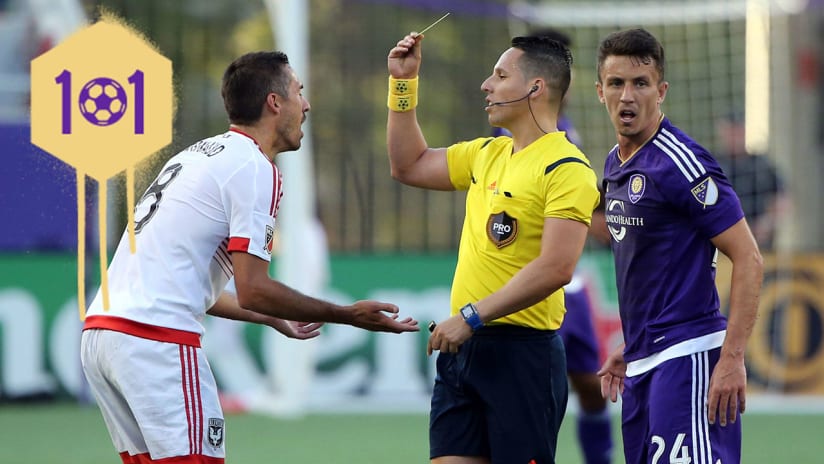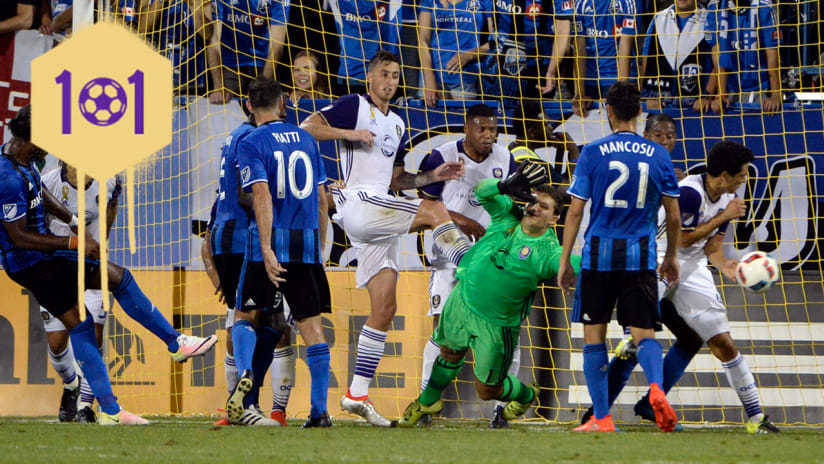In soccer, there are essentially three levels of fouls. Players can receive a basic foul, a yellow card, or a red card. The severity of the foul is the determining factor of what level of foul the player will receive.
It is important to understand that all fouls committed during a soccer match are determined by the referee’s interpretation of the rule, and can be impacted by the angle the referee or assistant referee had when watching the committed offense. Below we explain what constitutes a foul, and how a referee determines what level of discipline the player who committed the foul should receive.
The key when setting judgment is whether the player committed the foul using careless, reckless, or excessive force during the play. A careless play will result in a basic foul, reckless play will result in a yellow card, and a play involving reckless force will result in a red card (automatic ejection). If a player receives two yellow cards during a match, it will also result in a red card.
Basic Foul
A basic foul is awarded the majority of the time a foul is committed. A referee will halt play, and award a direct free kick when a player commits one of the following acts that the referee considers careless:
- Kicks or attempts to kick an opponent
- Trips or attempts to trip an opponent
- Jumps at an opponent
- Charges an opponent
- Strikes or attempts to strike an opponent
- Pushes an opponent
- Tackles an opponent
When a foul is committed, the team who was fouled will be awarded a direct free kick, which is simply a free pass or shot from the spot the foul was committed. During a direct free kick, the opposing team must stay ten yards away from the ball. Here is an example of a basic foul, and resulting direct free kick:
As you can see from the above video, Orlando City midfielder Kevin Molino was fouled by NYCFC defender Ned Grabavoy. While Molino was dribbling the ball towards the goal, Grabavoy stuck his leg in front of Molino attempting to knock the ball away. Since Grabavoy did not touch the ball and tripped Molino, he was whistled for the foul. Since it was not a careless or reckless play, he was only given a foul, and not a yellow or red card.
It is important to remember that if Grabavoy would have touched the ball with his foot before tripping Molino, then no foul would have been called. If a player touches the ball before the player, in most cases that would nullify any foul.
After Molino was fouled, Orlando City was awarded a direct free kick with the defenders being forced to stand 10 feet away. Kaká took the free kick and scored the tying goal.
Determining a yellow card:
In the video above, Vancouver Whitecaps forward Kekuta Manneh attempted to slide tackle the ball away from Orlando City defender, Aurelien Collin. In this play, Collin was going to beat Manneh to ball. Since Manneh still attempted the slide tackle with two feet and the studs of his cleats facing up (“showing” in soccer lingo), he is risking a yellow or possibly red card for the play.
Manneh missed the ball completely, and both of his studs went into the shin bone of Collin. Fortunately for Manneh, the he was only given a yellow card for careless play, but the MLS Disciplinary Committee would grant him a one game suspension for the play after review.
Always remember that yellow and red cards are determined by the referee’s interpretation of the rule. This means that some ref’s will give a yellow card while another ref might give a red.
Determining a Red card:
In the above video, Chelsea goalkeeper Thibaut Courtois was given a red card for his foul on Swansea City forward Bafetimbi Gomis. This foul was undeniably a Red Card considering Courtois kicked Gomis in the abdomen area and made no contact with the ball. The play was also made in a reckless fashion, which is ultimately a red card.
It was also an argument that Courtois “denied a goal scoring opportunity” by not allowing Gomis a chance to score a goal in the run of play, that too also classifies as a red card.





